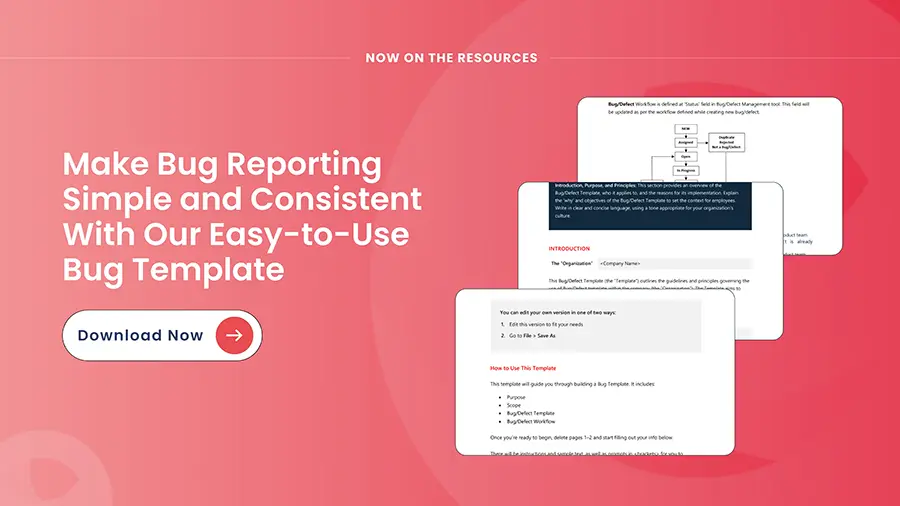In the fast-paced world of QA, it’s easy to miss the subtle signs in your processes, tools, or team structure that might be slowing you down. With constant pressure to deliver faster and a shortage of skilled talent, it can often feel like you’re always struggling to keep up.
As a top-notch Quality Assurance Solutions Provider, Enhops understands these challenges all too well. In this blog, we’ll walk through some common red flags that might be quietly undermining your Quality Assurance efforts, and offer insights on how to align your processes, tools, and people for better outcomes.
Process Red Flags
When QA processes aren’t clearly defined, teams often find themselves struggling with inconsistencies and inefficiencies for quality assurance. This could be due to the lack of structured testing procedures, insufficient documentation, or poorly aligned sprint planning. These gaps not only lead to a rise in defects but also create challenges in maintaining quality and consistency across projects. Addressing these process-related red flags is essential for ensuring smooth workflows, better traceability, and the delivery of reliable, high-quality products.
- Lack of Defined QA Processes: The absence of established QA processes can feel like navigating without a map. When unit testing by developers is the only form of testing, gaps emerge that could jeopardize product quality. Additionally, without a formal QA sign-off process, the potential for defects increases, which can lead to customer dissatisfaction.
- Inadequate Test Management and Documentation: Limited documentation can create confusion and inefficiencies within your team. When there isn’t a well-defined test life cycle or bug life cycle, critical information may slip through the cracks, resulting in delayed resolutions. Establishing standardized test management practices will enhance clarity and traceability, allowing your team to operate more effectively.
- Limited Test Coverage and Execution: We all know that missing critical tests can lead to major headaches down the line. Insufficient test coverage increases the risk of undetected defects, while the absence of regression, performance, and security testing can leave your product vulnerable.
- Ineffective Issue Aging and Follow-Up: Unresolved defects in the backlog can create a feeling of overwhelm. Without proper tracking and follow-up, opportunities for improvement may be lost, diminishing accountability within your team.
- Insufficient Planning and Coordination: It’s easy to lose sight of priorities when sprint increments and product goals aren’t aligned. This disconnection can create frustration for your team as they strive to deliver features that truly matter. By improving planning efforts and addressing potential third-party impediments upfront, you can set your team up for success and help them maintain focus on delivering value.
The key to overcoming these QA red flags lies in establishing a well-defined and scalable framework that integrates structured processes, comprehensive documentation, proactive planning, and clear communication channels. By implementing a Testing Center of Excellence (TCoE), organizations can centralize best practices, enhance collaboration, and streamline testing efforts across projects. This approach ensures that your QA teams are equipped with the right tools, processes, and support to consistently deliver high-quality, reliable products.
People Red Flags
The strength of any QA program lies in the people behind it, and when roles, responsibilities, and communication are unclear, the entire system suffers. From undefined Scrum roles to the lack of ongoing training, these red flags point to a team that might be struggling with accountability and alignment. Ensuring that team members have clear roles, a shared understanding of goals, and access to continuous training can make a significant difference in driving quality outcomes and building a culture of excellence.
- Lack of Accountability and Role Clarity: Unclear Scrum roles and undefined responsibilities create confusion and hinder ownership within the team, leading to bottlenecks and inefficiencies in delivering high-quality results.
- Inconsistent Agile Practices and Communication Gaps: While the team is familiar with Agile methodologies, inconsistent implementation and the absence of designated individuals to communicate the product roadmap result in misalignment and frustration, ultimately impacting project outcomes.
- Neglected Training and Resource Gaps: Insufficient ongoing training and a lack of expertise in Test Automation, Performance Testing, and Security Testing leave the team underprepared to tackle emerging challenges, hindering overall quality and performance.
To overcome these people-related red flags, partnering with a dedicated QA provider can help bring clarity, alignment, and expertise to your team. A reliable QA partner can implement engagement models such as team extension, outcome-based delivery, or co-owned quality initiatives to suit your specific needs.
Tools/Technology Red Flags
When evaluating the health of a QA program, tools and technologies play a crucial role in ensuring efficiency, consistency, and scalability. Red flags in these areas often signal deeper issues that can affect the overall quality and speed of product delivery. Below are key technology-related concerns that commonly hinder the effectiveness of QA efforts and prevent organizations from reaching their full potential:
- Manual Deployment Process: The absence of release process automation creates unnecessary delays, increases the likelihood of human error, and hampers scalability. Manual deployments often lead to inconsistency, affecting production reliability.
- Lack of Observability Tools Beyond Basic Logging: Relying solely on Prefect ETL logging is insufficient for comprehensive monitoring. The absence of full observability tools makes it difficult to identify, troubleshoot, and resolve performance bottlenecks or critical system issues in real time.
- No Comprehensive Version Control for Artefacts: Without proper versioning of artefacts, maintaining traceability and ensuring consistent software delivery becomes nearly impossible. This results in confusion, mismanagement, and delays in project execution.
- Inconsistent Use of Project and Document Management Tools: Tools like Confluence and Jira are in place, but inconsistent use across teams leads to disorganized project management. This lack of alignment across teams results in gaps in communication, missed deadlines, and overall inefficiency.
- No Established Test Automation Process: Without a dedicated test automation process and framework, QA teams may struggle to scale their testing efforts, relying heavily on manual testing. This results in slower release cycles and less reliable test coverage.
- Missing Performance and Security Testing Tools: Performance and security testing are critical to ensuring that software functions efficiently under load and is safeguarded against threats. The lack of tools for these areas exposes the organization to risks, including security vulnerabilities and poor user experiences.
To address these technology-related red flags, bringing in automation experts to assess your current setup is crucial. They can help identify the gaps in observability, deployment processes, and version control, and suggest frameworks tailored to your needs that can scale with your business. By implementing automated deployment for Azure resources, introducing dedicated test automation tools, and incorporating performance and security testing, you’ll significantly reduce manual effort, minimize human error, and enhance overall efficiency. A strategic review of your tools will ensure you’re equipped with the right technology to support seamless, reliable QA processes.
Turning Red Flags into Opportunities for QA Improvement
The key to a successful QA program lies in the early identification and resolution of process, people, and technology-related challenges. Enhops excels in helping organizations uncover these red flags—whether it’s a lack of formal QA processes, manual deployment bottlenecks, or inadequate test management. Our expert team can offer tailored, actionable solutions that drive process improvements, enhance team alignment, and optimize technology for long-term success. With Enhops, you can transform QA red flags into opportunities for continuous improvement.
To facilitate this transformation, we provide a risk-free PoC that helps to explore the tangible benefits of investing in test automation. Our four-week engagement assess the clear ROI of your QA project, offering a working prototype for hands-on evaluation, tool and framework recommendations, and a detailed “itinerary” outlining future steps, goals, and outcomes. With these reports in hand, you can turn QA red flags into opportunities for continuous improvement.
Ready to turn red flags into opportunities? Request a risk-free POC and see how Enhops can elevate your QA processes.
FAQ
Q1. What is a QA red flag?
A QA red flag is any indicator — in process, people or tools — that suggests your quality assurance program may be mis-aligned, under-resourced or not operating at its full potential. Common examples include undefined QA processes, weak test coverage, manual deployment bottlenecks or unclear team roles.
Q2. How do I prioritise which red flags to fix first?
Start by identifying the root cause that impacts your business most:
- If you have frequent production defects → focus on process/test coverage.
- If release cycles are too slow → tool/automation improvements may be highest priority.
- If team morale or accountability is low → address roles, training and team alignment.
Use a risk-based approach: what has the highest impact × highest probability = highest priority.
Q3. Can a QA partner really help?
Yes. A specialist QA provider brings structured frameworks, automation expertise, tooling experience and best practices that many in-house teams may lack. They can plug capability gaps, allow you to scale faster and help implement governance and repeatable processes.




